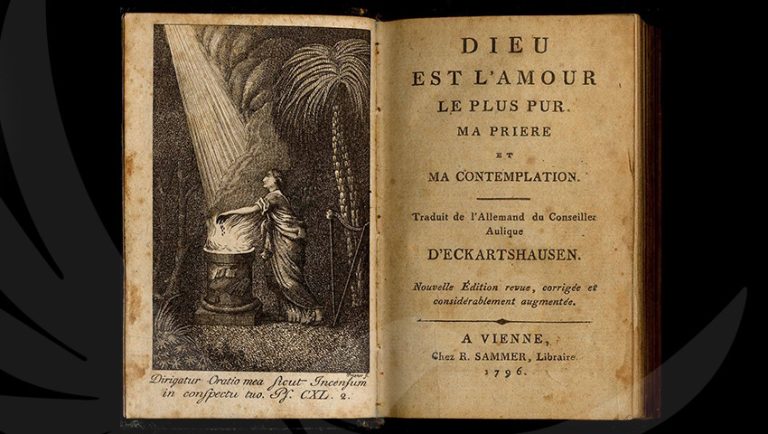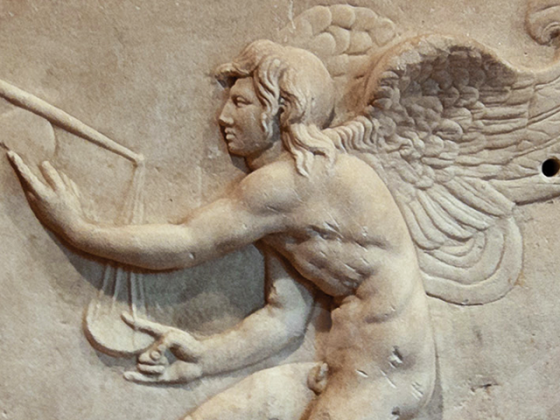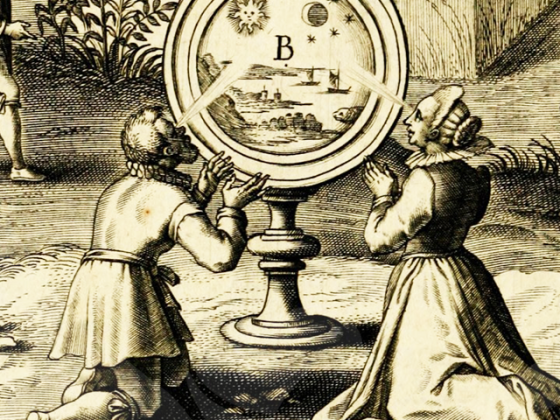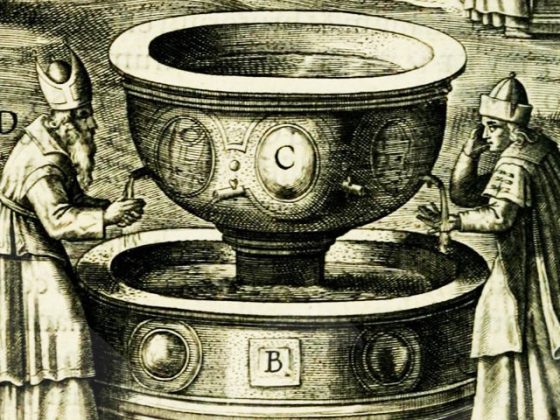Dearest friends:
I am writing to you, appreciated readers, to send you this engraving which is entitled…
…GOD IS THE PUREST LOVE
—MY PRAYER AND MY CONTEMPLATION—
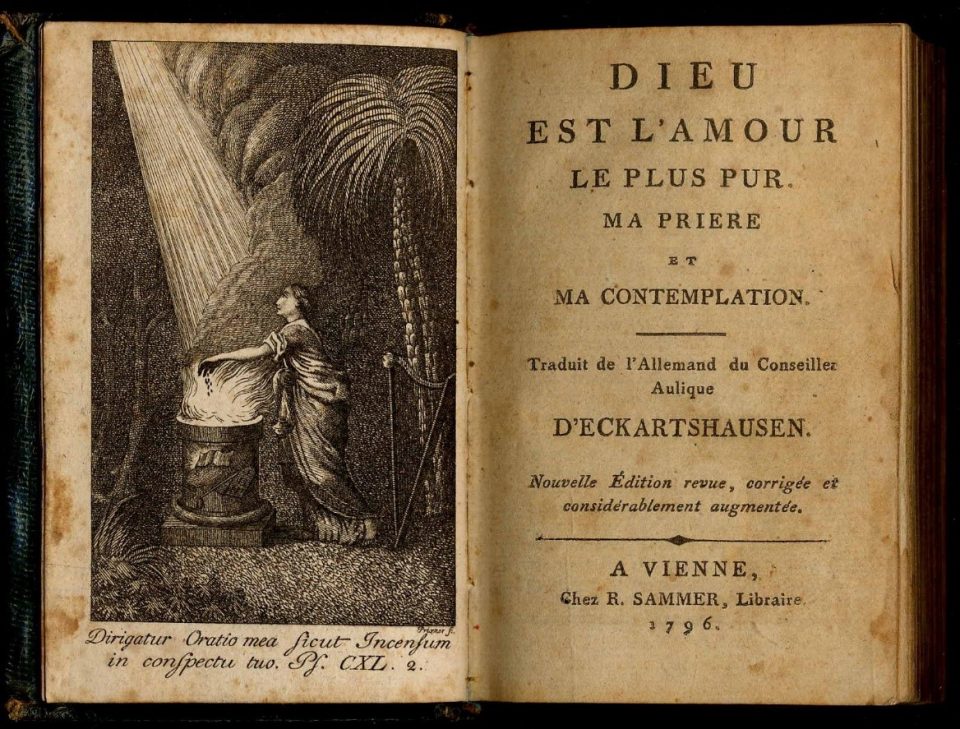
The original title of this engraving is Goot ist die reinste liebe.
This engraving was the work of Karl von Eckartshausen, who lived between 1752 and 1803, and was part of a treatise published in Vienna in 1796. This artist was also a German writer, mystic, philosopher and theosophist.
In this artistic work you can see a maiden – an Isis or priestess – doing her ablutions in front of the fire that burns in a cauldron and is connected to luminous rays that come from the heavens.
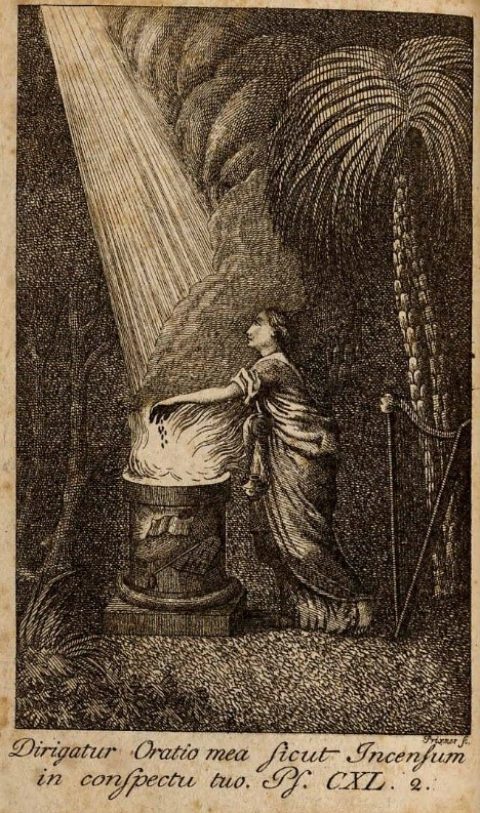
Fire, dear reader, is the most accurate expression with which we can depict that which religions call God. This element is the origin of the other three elements present in creation, namely: air, water and earth. That is the holy TETRATRAMMATON of creation.
The maiden who worships fire alludes to the priestesses of the igneous element. For this reason, while with her left hand she caresses the flames of the cauldron, with her right she holds a censer with which she blesses the mystical atmosphere it has created and at the same time it serves to accompany her prayers addressed to the Most High. This act is what produces the exclamation that accompanies our engraving: “Love is my prayer and my contemplation”, because, inebriated by divine love, we can enter into contemplative ecstasy and begin to appreciate the contemplation of the mysteries of the BEING.
Note that behind the priestess we see a harp, a musical instrument that for millennia has been used to fill the ceremonial enclosures of many cultures with sublime notes. Obviously, such an instrument marks the musical octaves in which the fragrance of love unfolds.
On the other hand, near that harp we are shown a palm tree. The palm tree has always been a decorative element of many biblical stories. Let us remember that, according to the esoteric Gnostic tradition, when Christ, the Nazarene, entered Jerusalem, a palm tree bowed to greet him. This Elemental perfectly symbolizes the human spine, and its fruit —the coconut— symbolically represents our head, thus indicating to us that by means of alchemical work our mercurial vapors ascend within our spine and are deposited in our brain, eventually producing the awakening of Consciousness…..
A few words from Venerable Master Fulcanelli come to our aid to delve into this beautiful description:
“Prostrate yourselves, ye magicians of the East, and ye doctors of the law; bow your heads, O sovereign princes of the Persians, the Arabs, and the Indians! Behold, adore, and be silent, for you could not comprehend. It is the divine, supernatural, ineffable Work, the mystery of which no mortal will ever penetrate. In the silent and profound night firmament, shines a single star, an immense and resplendent star composed of all the celestial stars, your luminous guide and the torch of universal Wisdom. See how the Virgin and Jesus rest, calm and serene, under the palm tree of Egypt. A new sun shines in the center of the wicker cradle, a mystical basket once carried by the cystophores of Bacchus and the priestesses of Isis; the new sun that is also the Ichthys of the Christian catacombs. The ancient prophecy has finally been fulfilled. Oh, miracle! God, lord of the Universe, incarnates for the salvation of the world and is born, on the earth of men, in the delicate form of a little child.”
VM Fulcanelli
Fire, esteemed friends, as Gnosis has already said, renews us incessantly. That is the interpretation of the Christian INRI: Igni Natura Renovatur Integra, ‘FIRE INTEGRALLY RENEWS ALL OUR NATURE'. Jesus of Nazareth was the highest exaltation our humanity has known for 2023 years.
God is a fire with its own intelligence thanks to which, when it ignites itself, it creates worlds, and when it extinguishes itself it destroys them ─Heraclitus said─. It is also worth noting that around the altar we can see an open text that alludes to the doctrine, a candle snuffer, a symbol of delicacy when wanting to put out our fires, and the tables of the law representative of the Ten Commandments.
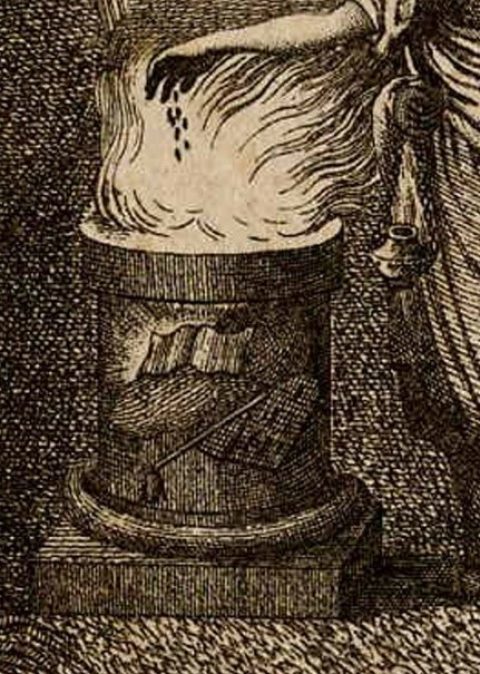
Latin phrase:
«Dirigatur oratio mea sicut incensum in conspectu tuo».
Translation: ‘Let my prayer be set forth before thee as incense.' Psalm 141.
Here are a few words for reflection:
“Worship is a transcendental admiration.”
Carlyle
“When the heart weeps for what it has lost, the spirit laughs for what it has found.”
Sufi Doctrine
“The true mystic finds God in all religions.”
Ibn Arabi
“Mysticism is not the ecstasy, it is much more and better; it starts from the contempt of all things of life and ends in the love of all things of life; contempt lifts us up until we find an ideal that calms us, and with the cross of the ideal we have found we see what was once large and hateful, much smaller and more lovable.”
Ganivet
MEMENTO MORI.
─‘Remember that you are going to die’─.
KWEN KHAN KHU


